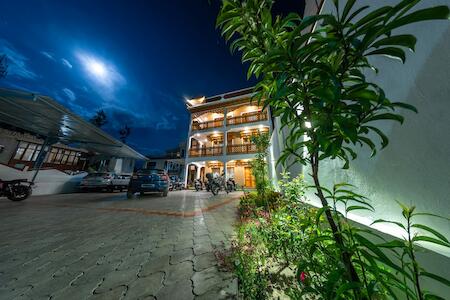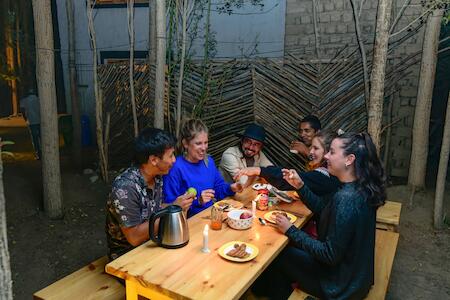Looking for budget stays in Leh? This section is designed to save you time, money, and unnecessary stress. We've got insider tips to help you find affordable hostels and the cheapest places to stay in Leh.

Leh, India, is the capital city of the Indian kingdom Ladakh, situated in the state of Jammu and Kashmir. Leh is at an altitude of just under twelve thousand feet, and due to its high altitude, many travelers to Leh face altitude sickness. Leh is covered in snow for most of the year. You can fly directly from Delhi to Leh and many budgets Indian airlines offer cheap fares now. Srinagar-Leh highway is open from May-September while Manali-Leh highway opens mid-June to September. Since the altitude gradually increases when you are coming from Srinagar, the chances of experiencing altitude sickness are very unlikely on this route. Both journeys, however, take two days with an overnight stop.
Individual taxis are expensive, and if you are on a budget, shared taxis are the most popular mode of transport to get to Leh, and also for visiting other nearby attractions such as Zanskar Valley, Pangong Tso Lake, Tsomoriri Lake, and Turtuk. Buses (both ordinary and deluxe buses) also operate from Srinagar and Manali to Leh. There's also a bus from Delhi, which takes up to three days to reach Leh. Due to its popularity as a summer destination, there are now many Leh, India hostels in the town center. If you are an environmentally conscious traveler with a budget, there are now eco-hostels in Leh, India, and homestays in the region for a more authentic experience. Leh Palace and Shanti Stupa are a few iconic landmarks in the region.
Recently, Leh is also becoming a winter destination for those who love a bit of adventure. However, the temperatures drop down to minus-seventeen degrees Celsius and most of the restaurants and accommodation options shut down during this period of the year. While it's definitely not a place for partying, due to the region's Tibetan Buddhist culture, guest to the region experience a warm, welcoming vibe. Leh and the nearby areas at least need two weeks to explore. During your first day or two, it's advised to take plenty of rest to acclimatize to the high altitude of the Himalayan region.
Written by Travel Expert Leh
 Zin
Zin

